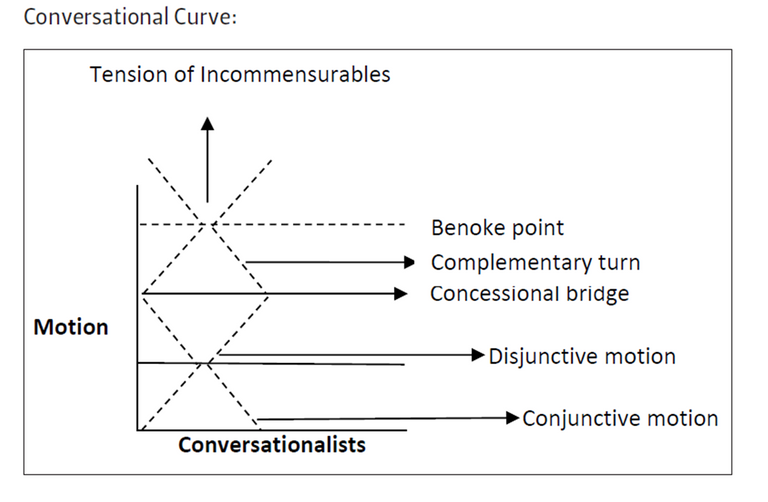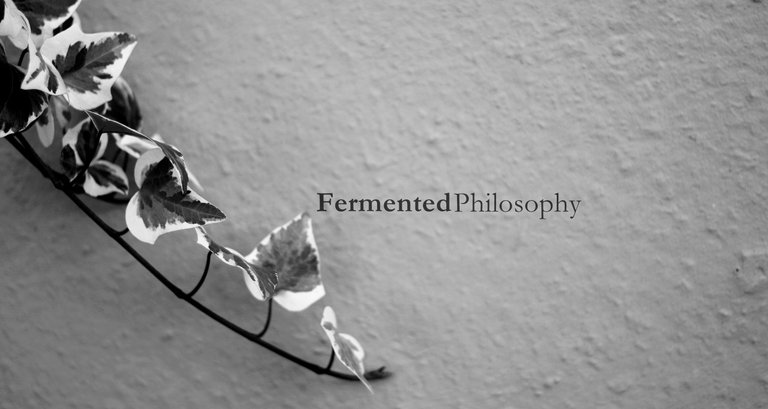Fermented Ph.D. Dump: Conversationalism as a Method of Practicing African Philosophy (Part 3)
A Tactical Recap to the Fermented Ph.D. Dump
This is the third and final part of the Conversationalism as Method posts. I thought about doing it in one post, but as clearly is the case, it would have run over 3000 or so words. To briefly recap, the first post regarded conversationalism as a method; in this post, I discussed the method itself. In the second post, I expanded on some of the more intricate detail by discussing what I see as five very important elements. In this post, I will attempt to discuss two important theses which ground and underlay the method itself. These two theses are called (i) the ontological thesis, and (ii) the logical thesis. To try and briefly state what these theses mean is challenging, but in short, ontology is about what there is, i.e., the study of being. Therefore, the ontological thesis is about what the method regards as being in the world. The logical thesis, on the other hand, is about the stuff that the ontological thesis accepts as being there and how they can relate to other things and each other.
I will thus attempt to briefly discuss these two theses and subsequently conclude by stating how they ground the method of conversationalism.
I hope that this will interest you to do some more reading about conversationalism and the conversational (African philosophical) school of thought. As with the previous posts, my main source of information is
- Chimakonam, J.O., 2017a. Conversationalism as an emerging method of thinking in and beyond African philosophy. Acta Academica, 49(2):11-33..
- Chimakonam, J.O., 2017b. What is conversational philosophy? A prescription of a new theory and method of philosophising, in and beyond African philosophy. Phronimon, 18, pp.115-130.
The Ontological Thesis
Ontology is the study of being. In short, this means that it tries to grasp "what there is". Imagine a table with a book and pen on it. If I asked you "How many things are there on the table?" and you answered "Two", this means that you "structured" the world in such a way as to view two things: a book and a pen. One could structure the world differently so that there might be 100 things, that is by viewing the book (that consists of say 99 pages) as 99 pages and the 1 pen. There are thus 100 things. One can thus "structure" the world in various ways, or in other words, one can view things as "being" different.
As has been foreshadowed, in the context of conversationalism there are the proponent (nwa-nsa) and the opponent (nwa-nju) of a position. These two might evoke different things to challenge each other or to strengthen their arguments. Chimakonam provides us then with this complicated diagram to showcase how the conversation might unfold in what he calls the conversational curve. In short, this diagram shows how the conversation is supposed to flow and evolve:

[Source: Chimakonam, 2017a, page 19.]
The idea behind it is rather simple. The conjunctive motion is basically when a conversation is characterized by joining things together or when a quasi-agreement is reached, the disjunctive mode is when quasi-disagreement is reached or when words such as "and" or "but" is used (Chimakonam, 2017b:121). In other words (or ontologically speaking), these are the things that carry the conversation onwards and provide the source material for creating the motion which is sought after. What is also important is the idea behind the "reality" to which the conversational school of thought subscribes to, namely, that
“‘independent realities exist not as isolated units but as interconnected entities in a network’,” (Chimakonam, 2017a:18)
and that reality is subsequently:
“one big network of variables some of which are opposed to some others, yet they are interconnected,” (Chimakonam, 2017a:18).
This view of reality (i.e., ontology) allows us to have disjunctive and conjunctive motions as noted.
One might wonder, why would things not just move past the fixed points as showcased in the diagram above. Or, in other words, why are there what Chimakonam calls complimentary turns and concessional bridges? These are regulated by what he also calls the benoke point and the complimentary bar. These two elements basically regulate how far a conversation can go in the disjunctive and conjunctive motions (Chimakonam, 2017a:19). More specifically, the benoke point regulates how close different statements (or variables) can come to each other, and the complimentary bar regulates how far much these variables can differ from each other.
One might use the analogy of a game of squash to symbolize this conversation. Nwa-nsa hits the ball against the wall (or the benoke point) and the opponent (nwa-nju) returns the ball by hitting it against the complimentary bar wall. The squash game is thus regulated by these walls, the ball cannot be hit beyond it. It is in some sense contained.
This is obviously necessary because one cannot (for the sake of time and understanding) go off in a direction and never "return" to the conversation at hand. These measures are thus in place to keep the conversation in a somewhat structured motion and not in pure chaos random movements.
The Logical Thesis
The view of reality as discussed above can logically not contain "black and white" facts. It is necessarily pluralistic in nature. Chimakonam (2017a:20), for example, states that
‘The truth value of propositions could vary from one context to the other’".
The catchphrase of sorts for conversationalism flows from this idea: “context upsets fact” (Chimakonam, 2017a:20). To substantiate this point, Chimakonam (2017a:20) discusses an apt example. One requires water to stay alive is seen as a fact. But when someone is in the middle of the desert and someone else is busy drowning in a river, the truth value of this statement is radically different. In different contexts, therefore, facts can be interpreted differently. There is no single or metaphysical truth to things. The context determines the truth value.
Grounding and Justifying Conversationalism
Because of these two theses, one might ground the method of conversationalism as follows. Reality consists of various different things which are interconnected and are to some degree determined by context. For example, reality is not made of rigid facts like "water is life-giving." In some cases, like drowning in a river, this "fact" is factually wrong.
How this relates to conversationalism the method is a bit more complicated. It might require a separate post as well (but one in the future and not now). But in short, when the two conversational partners enter this framework (i.e., accepting these two theses) they will have a conversation characterized by being equal and fair. In other words, the notion of metaphysical sameness (or the notion that, for example, there are rigid facts) can induce an uneven or unequal base from which to converse. For example, as I will discuss in future posts, western philosophy has for a long time regarded itself as the harbinger of truth and true philosophy. An equal conversation cannot be held with someone subscribing to this ontology.
Postscriptum, or So Long For Now
This was the last post on conversationalism for a while. I am busy writing a different chapter now and will return to Chimakonam in a couple of months. For the next couple of posts in the Ph.D. dumps, I will focus on the work of African philosopher Serequeberhan. I need to hand in a chapter on his work very soon, do a presentation in which I focus on his work, and write an article on his work as well. It is a tough ask! But what can I do otherwise?
In any case, I hope that you at least learned something from these three posts, or that I might have inspired you to learn more about African philosophy. It is very new and contemporary work and I do not think there is even a book published on it yet. Let us see what the future holds for this method.
The post is based on the work of Chimakonam (hyperlinked and referenced) and my lecture notes. But they are my own readings of Chimakonam's work. The photographs are also my own, taken with my Nikon D300. The graph used in the post is the work of Chimakonam's as hyperlinked.



Congratulations @fermentedphil! You have completed the following achievement on the Hive blockchain And have been rewarded with New badge(s)
You can view your badges on your board and compare yourself to others in the Ranking
If you no longer want to receive notifications, reply to this comment with the word
STOPCheck out our last posts: